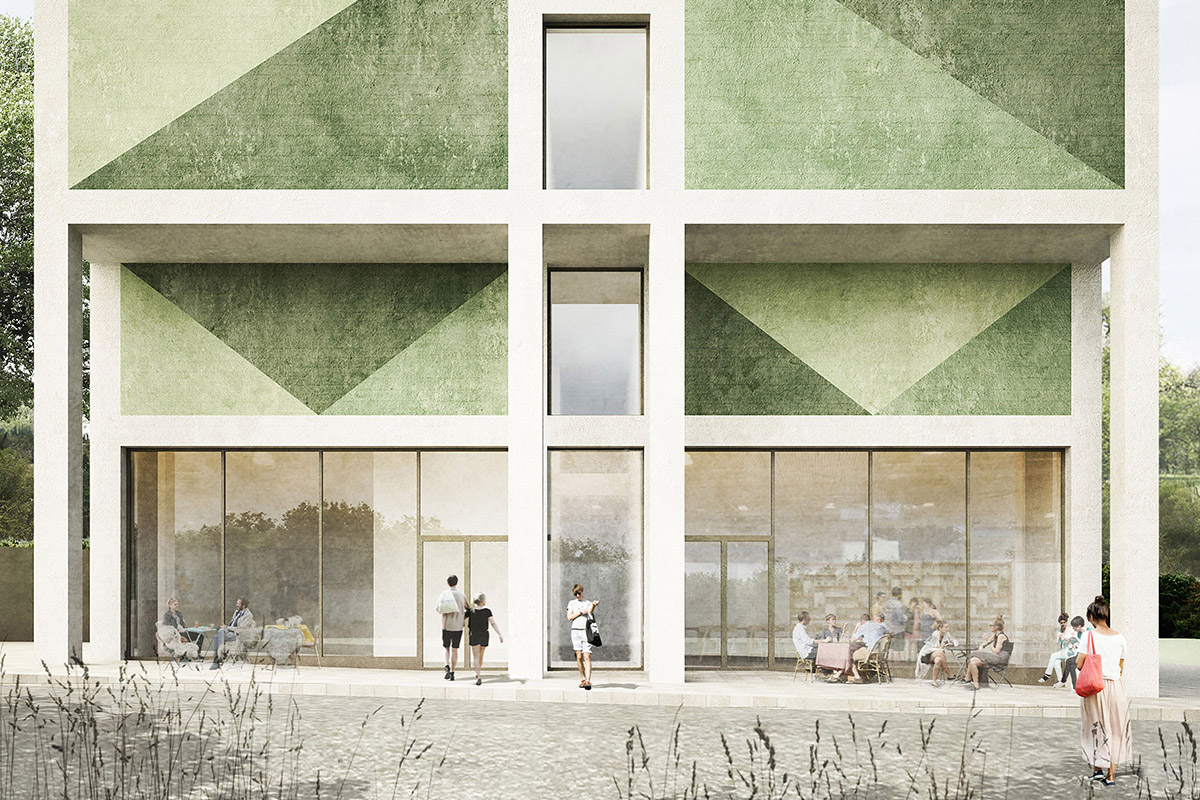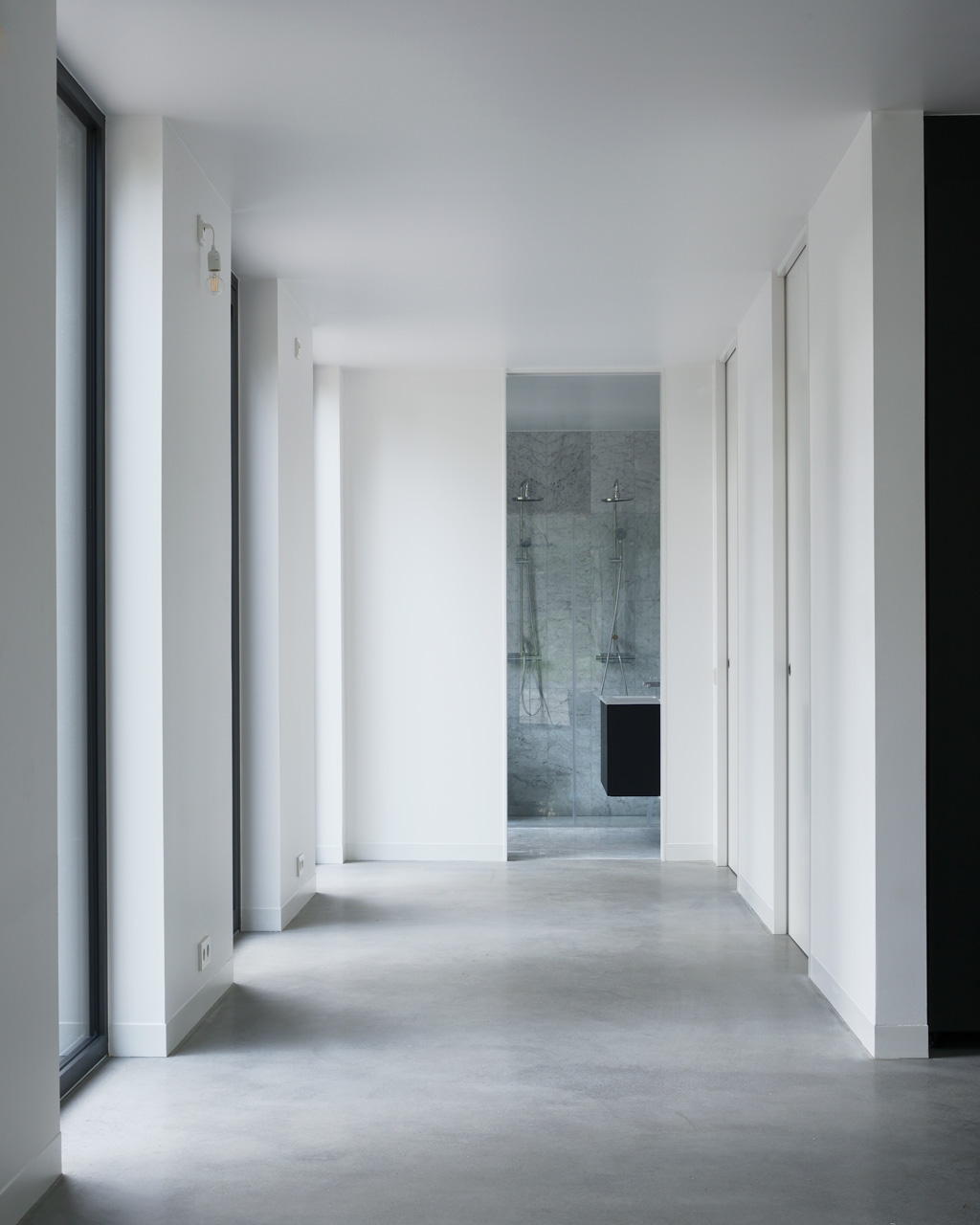19/008
Hermansson
Hiller Lundberg
Architecture Office
Stockholm
19/008
Hermansson
Hiller Lundberg
Architecture Office
Stockholm

«For us, the history of architecture is a very present thing, and we are constantly influenced by buildings we see and experience.»
«For us, the history of architecture is a very present thing, and we are constantly influenced by buildings we see and experience.»
«For us, the history of architecture is a very present thing, and we are constantly influenced by buildings we see and experience.»
«For us, the history of architecture is a very present thing, and we are constantly influenced by buildings we see and experience.»
Please, introduce yourself and your Studio…
The three of us (Andreas Hermansson, Andreas Hiller and Samuel Lundberg) met at the School of Architecture at the KTH here in Stockholm. Our first collaboration was starting an art gallery in a tiny 4 sqm space during our diploma year. We started working together in 2006 and founded Hermansson Hiller Lundberg in 2010. We are currently 12 people in the studio, and we just moved into a new space in the Södermalm district.
Right now we are working on several residential projects, two care homes, an extension to a hotel, and a number of masterplans for new urban developments. Nowadays a lot of our projects are large-scale, but we also work with small-scale projects, such as private houses. Most of the projects are around Stockholm, but we work all over Sweden.
We tend to work with different formal qualities and materials depending on the task and the context. There are many themes that we are interested in, such as order, symmetry, memory, history, tectonics, rethoric, pattern, proportion, monumentality, etc. We return to them in different ways to develop our projects and their architectural forms and building elements. So some projects can be quite similar and others quite different from each other.

Samuel Lundberg . Andreas Hermansson . Andreas Hiller
Samuel Lundberg . Andreas Hermansson . Andreas Hiller
Samuel Lundberg . Andreas Hermansson . Andreas Hiller
Samuel Lundberg . Andreas Hermansson . Andreas Hiller
How did you find your way into the field of Architecture?
We all studied other things before going to the School of Architecture, such as psychology, history, law, literature, governance and philosophy. Neither of us had set out from childhood to be an architect, but we each found our way there through an interest in buildings. You could say that we were searchers. In many ways, we still are.
What comes to your mind, when you think about your diploma projects?
At the time it was an important step on the way, but it is not something that is very present now.
What are your experiences founding Hermansson Hiller Lundberg and working as a self-employed architect?
For us, the important thing was to make architecture. And to do that, we started the office. For a long time, say the first five years, it was basically just the three of us and sometimes one or two employees. We never set out focusing on the business of running a company but that is something that you need to do, and so that is what we did. Growing the practice from the three of us to the twelwe we are now has been very interesting, and we are constantly developing our ways of working. But our focus has always remained on making architecture.
How would you characterize Stockholm as location for architects who want to start their own practice? How is the context of this place influencing your work?
One thing to say about Sweden is that it is dominated by very large offices, many with hundreds of architects, and a lot of projects naturally go to these companies. There are almost no public competitions so you have to start your office by getting some smaller commissions and grow from there. It’s not that easy to start an office here, although there are quite a few local younger offices that are doing very good work at the moment.
For us, the history of architecture is a very present thing, and we are constantly influenced by buildings we see and experience. The built environment in Stockholm is inspiring and we have a lot of very good architecture, especially from the early 20th century. From the National Romanticism of the 1910’s over the Nordic Classicism of the 20’s and 30’s, to a lot of good mid-century Modernism, and Stockholm is generally a beautiful city. There’s less to be influenced by from the last forty years here, but then we look to Europe and find kindred spirits in many places.
There are of course a lot of factors that have a strong influence on the work you’re able to do right now, such as the contemporary building industry, the commercial market logic, and the regulatory framework. All these make it difficult but not impossible to pursue certain kinds of architectural qualities. You have to be very determined and have a strong ambition. Architects have of course always worked in their particular time and context and this is simply a fact of our profession and culture.
Would you show us your working space?

What is the essence of architecture for you personally?
We work with many concepts and themes in architecture in a way that’s dynamic and constantly evolving, and resist the urge to simplify or reduce architecture to any one thing. So we couldn’t really talk about ‘the’ essence of architecture. There are many ways.
What is the essence of architecture for you personally?
We work with many concepts and themes in architecture in a way that’s dynamic and constantly evolving, and resist the urge to simplify or reduce architecture to any one thing. So we couldn’t really talk about ‘the’ essence of architecture. There are many ways.
Your master of architecture?
A Book: Complexity and Contradiction in Architecture [Robert Venturi]
A Person: Ricardo Bofill
A Building: Stockholm City Hall [Ragnar Östberg]
Your master of architecture?
A Book: Complexity and Contradiction in Architecture [Robert Venturi]
A Person: Ricardo Bofill
A Building: Stockholm City Hall [Ragnar Östberg]
How do you communicate / present Architecture?
It depends on the situation. We generally try to focus on architectural qualities and to show the buildings in their context as they are perceived, trying to present them without added drama or artifice. In many projects we have worked with the photographer Mikael Olsson, who has a particular way of seeing which suits our work and how we think of our buildings. Writing about architecture is a good way to investigate possible ways to think about any project. We also like to give lectures, where we can present our work more fully.
What has to change in the Architecture Industry?
How do you imagine the future?
A lot of the current situation is based on having a quite short timespan in thinking about what is being built. Taking the long view now and then would be a good thing. We don’t think much about the future, however. We’re focused on the here and now. If you look at the history of architecture, building for the future isn’t what has produced the works we mostly admire. Rather they are buildings that have been of their time, that met the needs in their present and that were drawn and built with care and conviction and spirit. That’s what we aim for, to make architecture that will endure and bring delight for a long time.
Project













